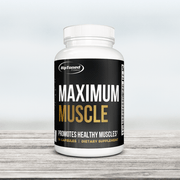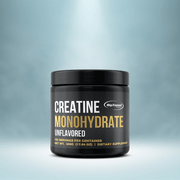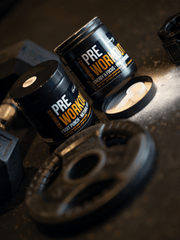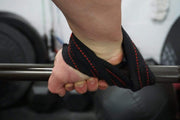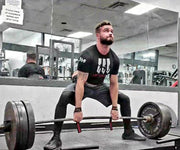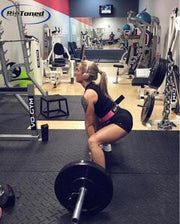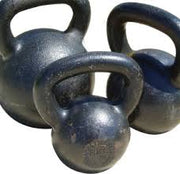Tight muscles are a common cause of back pain, which is one of the leading causes of disability worldwide. It is estimated that 80% of adults will experience back pain at some point in their lives. Back pain can range from mild discomfort to severe and debilitating chronic pain, often affecting daily activities and quality of life.
The most common types of back pain include muscle strains, sprains, and spasms. These back muscle pain can result from various factors, such as poor posture, repetitive motions, or heavy lifting. However, one of the main contributors to back pain is tight muscles. In this article, we will discuss how tight muscles can result in back pain and what you can do to prevent it.
What can cause tight muscles?
Tight muscles occur when the muscle fibers contract and remain in a shortened position. This can happen for several reasons, including:
- Lack of physical activity: When we sit or stand for prolonged periods, our muscles can become tight due to lack of movement.
- Overuse: Repetitive movements or activities that put strain on certain muscles can cause them to become tight. This is often seen in athletes who perform the same motion repeatedly, such as runners or weightlifters.
- Injury: Muscles can tighten up as a protective response to acute injury. This can happen after a muscle strain or sprain.
- Stress: When stressed, our muscles contract and become tense, leading to tightness and discomfort. This is often seen in the neck and shoulder muscles.
- Dehydration: Not drinking enough water can lead to muscle tightness and cramping.
- Poor posture: Sitting or standing with poor posture can put a strain on certain muscles, causing them to become tight over time.
How can tight muscles result in back pain?
Tight muscles can contribute to back pain symptoms in several ways:
Imbalance in muscle groups
When certain muscles are too tight, they can pull on other muscles in the body, creating an imbalance. This is especially true for the back and hip muscles, as they work together to support our spine and maintain proper posture.
For example, if your hip flexor muscles (located at the front of your hips) are too tight from sitting all day, they can pull on your lower back muscles, causing tense muscles around them to become strained and painful. This imbalance can also affect the spine's alignment, leading to sciatica or other types of back pain.
Limited range of motion
Tight muscles can limit our range of motion, making it difficult to move and perform daily activities. This can put a strain on our back muscles, leading to pain, stiffness, and discomfort.
For example, tight hamstrings (muscles located at the back of your thighs) can make bending over or touching your toes challenging. In turn, this puts stress and tension back on the lower back muscles, causing them to work harder and potentially leading to injury.
Also, when our muscles are tight, they can restrict blood flow and oxygen to the affected area. This can cause inflammation and muscle spasms, further using muscle tissue and exacerbating back pain.
Poor posture
Tight muscles can also contribute to poor posture muscle stiffness, which is a common cause of back pain. When certain muscles are tense and contracted, they can pull on other muscles and joints, affecting our body's alignment. This can lead to an increased curvature in the spine, causing pain and discomfort.
For example, tight chest and tight back muscles from hunching over a computer can cause the shoulders to round forward, putting strain on the upper back muscles. This can eventually lead to chronic back pain if not corrected.
Limited physical activity
Tight muscles can limit our ability to engage in physical activities, which is essential for maintaining a healthy back. When our muscles are tight, they are more prone to injury and strain when we move or exercise. This can lead to inflammation and pain from stiff muscles, ultimately hindering our ability to stay active.
Also, chronic back pain caused by tight muscles can make it challenging to perform daily activities, leading to a sedentary lifestyle. This can further contribute to back pain by weakening the muscles and promoting weight gain, adding more strain on our spine.
How to prevent back pain caused by tight muscles
The good news is that you can prevent back pain caused by tight muscles with some simple steps:
- Stretch regularly: Incorporating stretching exercises into your daily routine can help prevent muscle tightness and maintain flexibility.
- Stay hydrated: Make sure to drink enough water throughout the day to keep your muscles hydrated and healthy.
- Practice good posture: Be mindful of your posture when sitting, standing, or performing any activities. Avoid slouching and try to maintain a neutral spine.
- Stay active: Regular exercise can help keep your muscles strong and prevent muscle imbalances that can lead to back pain.
- Take breaks: If you have a desk job, make sure to take frequent breaks from sitting and stretch your muscles.
- Seek treatment: If you are experiencing chronic back pain, consult with a healthcare professional for proper diagnosis and treatment. They may recommend physical therapy, deep tissue massage therapy, or other treatments to relieve muscle tension and prevent further pain.
- Listen to your body: Pay attention to any warning signs or discomfort in your back muscles. If you feel tightness or pain, take a break and address it before it becomes a bigger issue.
Tips for incorporating stretching into your routine
- Start slow: If you are new to stretching, start with gentle and basic stretches before gradually increasing the intensity.
- Hold each stretch for 30 seconds: This allows your muscles to relax and improve flexibility fully.
- Don't push through pain: Stretching may feel slightly uncomfortable, but it should never be painful. If you experience pain, stop and reassess your technique.
- Focus on the major muscle groups: Make sure to stretch all the major muscle groups in your body, including your back, legs, hips, and arms.
- Include dynamic stretches: Dynamic stretches involve movement and are beneficial for warming up before exercise or physical activity.
- Be consistent: To see any improvement, it's essential to incorporate stretching into your routine regularly.
By understanding how tight muscles can contribute to back pain and taking proactive measures to prevent it, we can maintain a healthy and pain-free back. Remember to listen to your body and seek professional help if needed. We only get one back, so let's take care of it!
Does this mean I should never have tight muscles?
No, having some degree of muscle tightness and stiff back is normal and can even be beneficial in certain situations, such as during physical activity. However, it's essential to maintain balance and flexibility through stretching and other preventive measures to avoid developing chronic back pain.
Overall, the key is to listen to your body and find the right balance between keeping your muscles healthy and avoiding pain. So, next time you feel tightness in your tight lower back muscles, remember to stretch and take care of those hard-working muscles!
FAQs
Can regular exercise help prevent back pain caused by tight muscles?
Yes, incorporating regular exercise into your routine can help keep your leg muscles very strong and prevent muscle imbalances that can lead to back pain.
Should I only stretch when I feel tightness or discomfort in my back muscles?
No, it's important to incorporate stretching into your daily routine regardless of any discomfort. This will help prevent muscle tightness and maintain flexibility, reducing the risk of developing back pain. So remember to make stretching a regular habit!
Is it okay to stretch before exercising?
Yes, stretching before exercising can help warm up your muscles and prepare them for physical activity. Just make sure to include dynamic stretches in your warm-up routine rather than static stretches.
Can poor posture be corrected by stretching?
Yes, incorporating regular stretching and strengthening exercises can help improve your posture over time. It's also important to practice good posture throughout the day to prevent further damage. So stand up straight and stretch those muscles!
Conclusion
In conclusion, tight muscles can be a major contributor to back pain. When our muscles are too stiff and tight muscles, they can cause imbalances in the spine and limit our ability to engage in physical activities. This can lead to chronic back pain and hinder our overall quality of life.
However, by understanding the causes and taking preventative measures such as stretching regularly, staying hydrated, and practicing good posture, we can avoid developing back pain caused by tight muscles. It's important to listen to our bodies and seek professional help if needed so that we can maintain a healthy and pain-free back.
Incorporating stretching into our daily routine and being consistent with it is crucial for preventing muscle tightness, relieving pain, and maintaining flexibility. So, let's prioritize the health of our back muscles and remember to stretch, stay active, and practice good posture. With these simple steps, we can prevent back pain caused by tight muscles and live a healthier, more comfortable life.

























